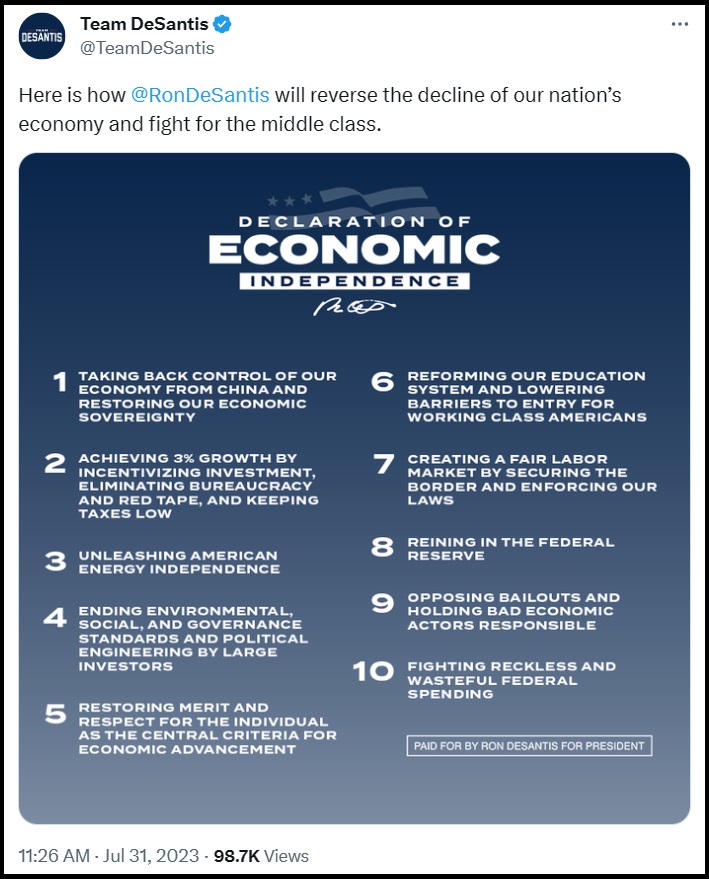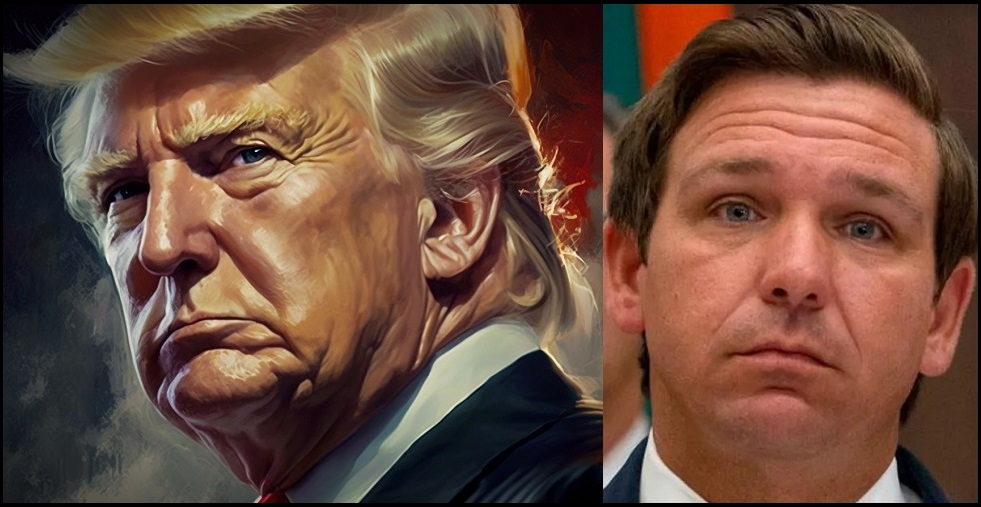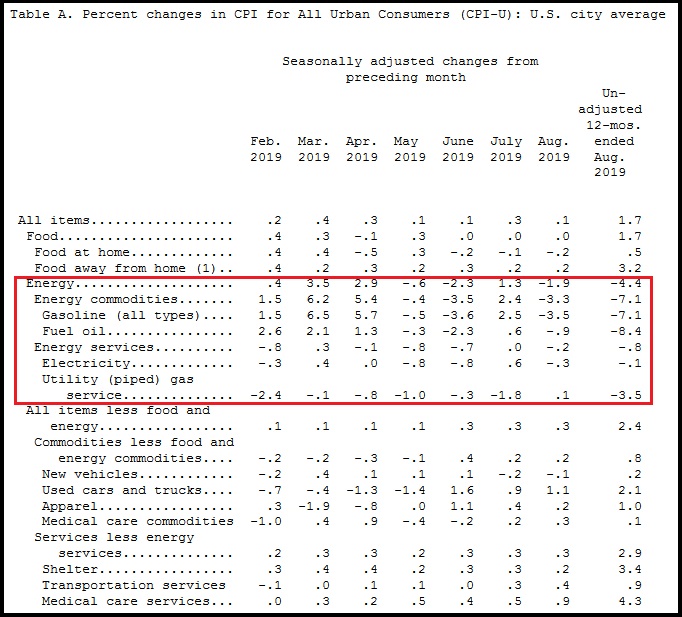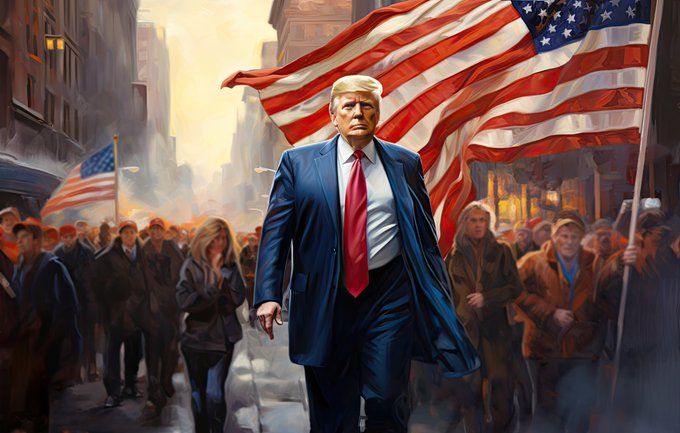Say we do it.
Say we prevent Mark Zuckerberg – or any other America-hating billionaire – from pumping hundreds of millions into the privatization of elections with drop-boxes and illicit “training” for local officials.
Say we deploy enough lawyers BEFOREHAND to monitor early voting and inspect suspiciously “harvested” ballots.
Say we prevent tens of millions of mail-in ballots being sent out unbidden under the cover of the latest Wuhan-generated demi-plague.
And say we actually mobilize enough pissed-off patriots to overwhelm the remaining election skullduggery that big democratic cities like, Philly, Chicago, Atlanta and Baltimore have become infamous for.
And then Donald Jonathan Trump wins. 45 becomes 47. What then?
Here’s one plan.
Obviously, as President Trump is on his way back from the Capitol and the Inauguration, his team is in the Oval with the stack of Executive Orders that cancel those enacted by Biden. Starting with the re-establishment of the XL-Keystone pipeline, reinstating Title 42 to secure the border, etc. That’s the easy part.
But then the hard work begins, work to establish the President’s control over the Executive branch, as his mandate from the People would demand. Because this time they’ll be even more vicious than before. This time those who disdain the Americans who built America and who fight her wars, must be so crushed that “government of the people, by the people, for the people,” can actually be our American reality.
How is that done? By seeing that Justice is done. By so shocking the permanent bureaucracy, that it cannot continue its seditious and unconstitutional ways.
1. Strip the FBI of its arrest powers. The FBI as FBI is irredeemable. After willingly colluding to become a GESTAPO-like entity happy to lie on secret FISA-surveillance warrants, raid a former President’s home and target innocent parents at schoolboard meetings, it cannot be allowed to survive with the powers it has.
Whilst cleaning out the huge organization will take weeks and months, its ability to persecute politically must be neutered instantly.
As Steve Friend, courageous FBI whistleblower has recently written, the FBI’s agents must be stripped of their status as 1811 federal police officers. No badges, no guns. Instead, they can go back to their original remit: investigating, not being a domestic intelligence agency targeting American citizens because they’re Catholics, or worked for President Trump, or are pro-life. Then, if the FBI wants to arrest someone because they’re a “threat” they’ll have to convince a local police chief or sheriff of their case, a local law officer who isn’t part of the DC Swamp.
But it’s not just the FBI. As we have seen with Operation Crossfire Hurricane, the joint FBI-CIA-NSA operation that targeted President Trump, his campaign and his Presidency, the politicization of federal government has gone far beyond the Hoover building.
The Department of Homeland Security has become a proxy censor for the Left, colluding with Palo Alto, and instead of preventing the next 9/11 – as was its remit – it has become a domestic intelligence agency spying on Americans.
And there can be no mercy for the unelected who have trammeled on the rights of millions of Americans simply because they believe in America and supported a “populist” President who wanted to Make America Great Again. If they have subverted the rights of their fellow citizens and the Constitution they must be removed from their positions of power and charged with every offense they have committed.
So what next?
2. Move every Swamp agency out of DC. More than 90% of Washington DC votes Democratic. And that figure, which would have made Saddam proud, isn’t much better in northern Virginia where many government types now live.
This isn’t just a question of political identity. It’s a threat to how we pick our President and whether they can actually exercise the People’s will.
After several weeks working in the White House, I noticed a disturbing pattern. At the weekly classified meetings of the National Security Council, whatever the topic of the day was – how to defeat ISIS, the future of NATO, the threat posed by China – I witnessed the same pattern. None of the very senior SES or SIS bureaucrats in the Situation Room, or who had dialed in via the secure video connection, would mention the new President, or what he was elected to do, and had promised to do.
Eventually I decided to interrupt these meetings, the highest decision making entity outside of an actual cabinet meeting – and remind all involved who the President now was and what he said yesterday about Jihadism, North Korea, the border, or Iran.
It was clear I was dealing with individuals who have been at their agencies for decades and couldn’t care less what President Trump wanted, or what the American People had voted for. That cannot be allowed to persist. So in the first week of a second Trump term, the President must initiate the move of the FBI, the CIA, the State Department, the DOJ, out of Washington, preferably to somewhere where patriots live, like Texas, or South Dakota.
And if you’re a GS-15 who loves Hillary, Obama, or Biden, loves to dine in Georgetown and Adams Morgan, and don’t want to live in “fly-over country,” that’s fine. Retire.
3. Stop the next Vindman. The greatest weakness of the 2016 Trump Administration, was the number of actual fifth columnists at the heart of the executive, from anti-Trump appointees like Gen. John Kelly and Bill Barr, to subversive members of the military like Lt. Col. Alexander Vindman, the key figure for the second pseudo-impeachment.
If President Trump is re-elected, no one can be allowed in an appointed position who isn’t 100% behind the America First agenda and the will of the people, as expressed in their choice of the new Chief Executive. At the same time, potential subversion must be identified and dealt with, or adequately deterred.
This will require placing someone in charge of presidential appointments who actually knows the swamp and can veto the RINO, old-boy network’s referrals, root out those with the intent to undermine the President and veto such threats.
What about those already in the bureaucracy who intend to use the power of their unelected position to covertly counter the President? They have to be sent a message.
In the first seven days, department by department, the most egregious established subversives must be apprehended and neutralized. For example, if you are the career diplomat who used her ambassadorial position to illegally surveil American citizens close to the President, or the FBI employee who labeled “traditional Catholics” a domestic threat, you must be physically removed from your office by US Marshals – ideally in front of the cameras of the corporate media – and charged under 18 U.S. Code §242 with Deprivation of Rights under the Color of Law.
If we do that with a few of the worst actors in each agency, throw the book at them, secure transparent prosecutions and get them fired, the motivation of the similarly unconstitutionally motivated saboteurs will change. I guarantee it. Even scumbag like their pensions.
That is how the will of the people is re-established and “government of the people, by the people, for the people,” is restored.
That is how we start. Who should serve in that new Trump Administration?
That’s part II. Stay tuned.












